Why have my pavers turned white in patches? Also known as efflorescence or reflective stains, these types of blemishes can create a long-lasting dilemma for patios and pavements. Discover the expected causes of this staining, which pavers are most affected and the ultimate question: how to prevent staining on paving.
What is efflorescence?
Efflorescence refers to the reflective stains you may have seen on patios, pavers or pavements.
Sometimes with porcelain pavers they have a ‘picture framing’ effect around the edges of the paving joints.
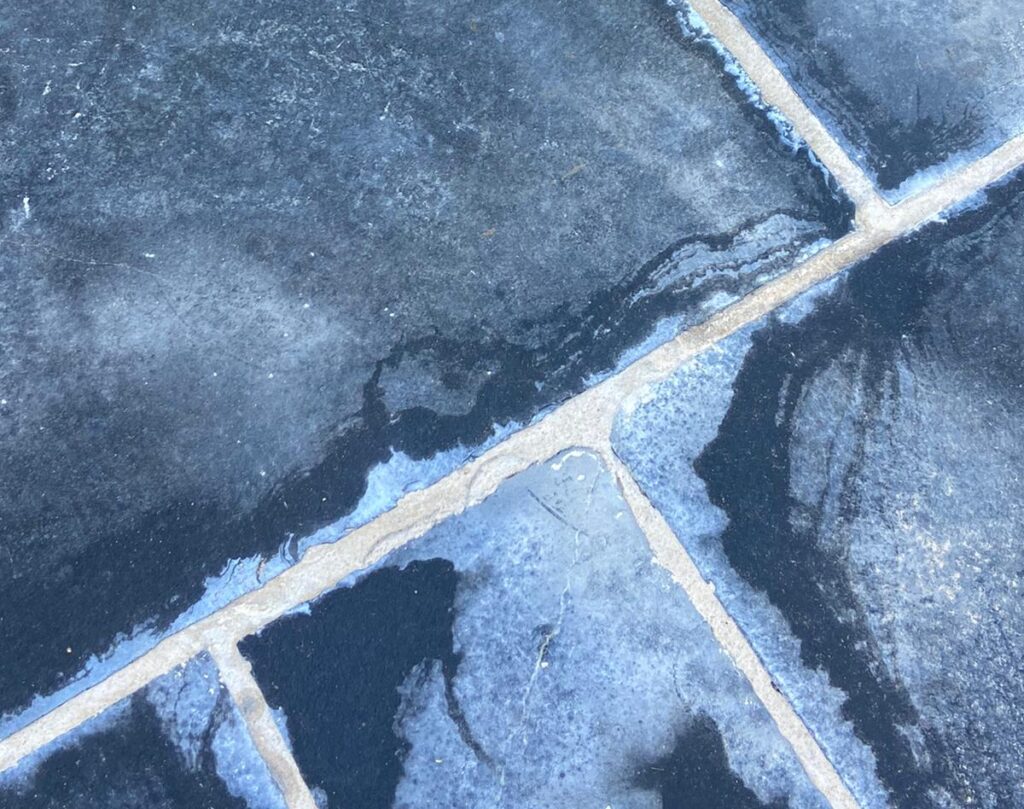
Other times, they appear as random blotches across the surfaces, which can even change colour on limestone and sandstone.
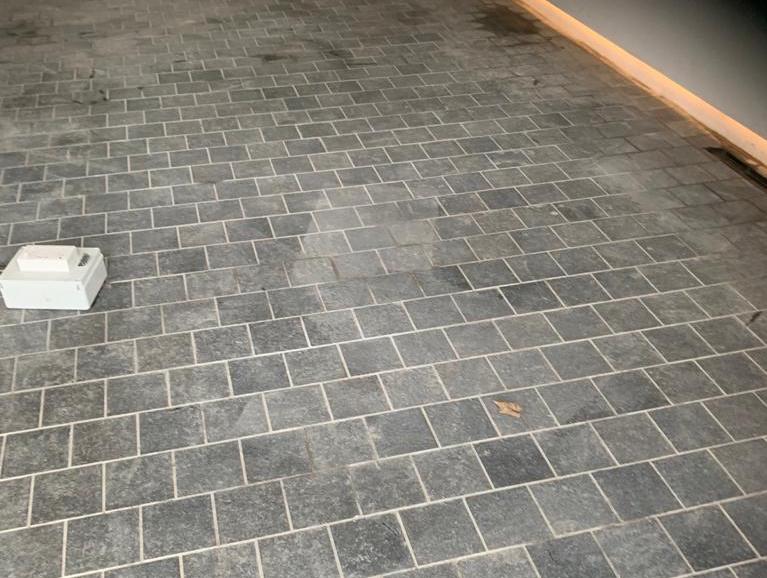
And on other occasions, hard, calcium deposits are formed on the pavers that you may need a chisel to remove.
If your pavers develop efflorescence, it will gradually wear off over time. But this can take months or even years.
Some products may help to remove reflective staining (see below for a list of products). But the best way to prevent these stains is to follow the manufacturer’s instructions when using bedding mortar and jointing compound. Today, best practice throughout the landscaping industry is to prime each and every slab with a slurry primer, such Pro-Prime, before laying it.
Causes of reflective staining
Reflective stains are essentially caused by minerals and salts being drawn-up through porous paving slabs as moisture within the bed dries and evaporates. It is this evaporation process that creates the common surface stains.
The key causes of efflorescence are:
- Gaps or concaves between the bedding mortar and the paving slab
- No slurry primer used on the underside of each slab, or not applied correctly
- Using spot or dab laying rather than utilising a full mortar bed
- Too much water used while applying a wet slurry grout
- Washing off the wet slurry grout too early or with too much water
- An impermeable bedding mortar below permeable paving and/or grout
- Moisture being absorbed into block pavers slabs at the factory
Generally speaking, reflective staining will only become a problem during the spring or summer months when it is warm enough for the water to evaporate. If you lay your pavers during autumn or winter, it may take until springtime for you to notice the signs.
Which types of pavers are affected?
Reflective staining commonly affects porous stone and some manmade blocks, such as:
- Indian sandstone
- Yorkstone
- Limestone
- Concrete blocks
- Granite
- Marble
- Travertine
However, picture-framing stains around the very edges of the slabs can even be created in non-porous stones like porcelain. We strongly recommend following industry best practice to prevent these tell-tale signs.
Best practice for preventing stains
Prepare a full-contact mortar bed
First-off, you need to ensure the bedding mortar is properly prepared so it will have full contact with the slab laid on top of it. Any gaps or concaves between the bed and the slab will attract moisture and salts. When the weather warms up, this moisture will evaporate through the slabs to create efflorescence.
Use a float to prepare the bed and get it fully flush. We recommend using a vacuum suction lifter, such as a Grabo Pro, to install each paving slab fully and securely on the bed. A Grabo will also save your back when laying a lot of slabs at once.
Always use a slurry primer
“It’s a crime not to prime”, says the team at Ultrascape. We couldn’t agree more. In fact, these days, it is industry best practice to use a slurry primer (not SBR or cement primer) with every type of paving slab – even non-porous slabs such as porcelain.
A slurry primer is an extra-strong adhesive that helps to prevent slabs from debonding from the bedding mortar below. Debonded slabs are potentially moving slabs. This movement, even if minor, will cause breaks and cracks in the jointing grout.
But aside from maintaining professional joints, a good primer will also help to reduce the risk of efflorescence staining.
Primers like Pro-Prime slurry primer offer an exceptional bond to the bedding mortar plus an impermeable protective layer on the bottom of the slab itself to help prevent water and salts soaking up, which is the main cause of reflective stains.
When using a primer, you must paint the entire bottom of the slab. Do not leave any gaps as this is where moisture can creep in and create staining. As mentioned earlier, laying the slab with a Grabo Pro will work wonders and stop you getting any primer on your hands or gloves.
At the end of the day, a successful paving job is one you don’t have to redo for decades to come. A quality slurry primer – applied across the whole bottom of the slab – will certainly help you achieve that.
Use Ultrascape's proven system to prevent stains
Ultrascape’s Mortar Paving System is an ideal choice for a long-lasting patio and reducing the risk of efflorescence. The team at Ultrascape is so confident in the system, they say it can last for 40 years when applied correctly without needing to regrout again.
The system involves:
- Using Eco-bed for the bedding mortar
- Painting Pro-prime slurry primer on the entire underside of each slab
- Using Flowpoint flowable grout for the jointing compound
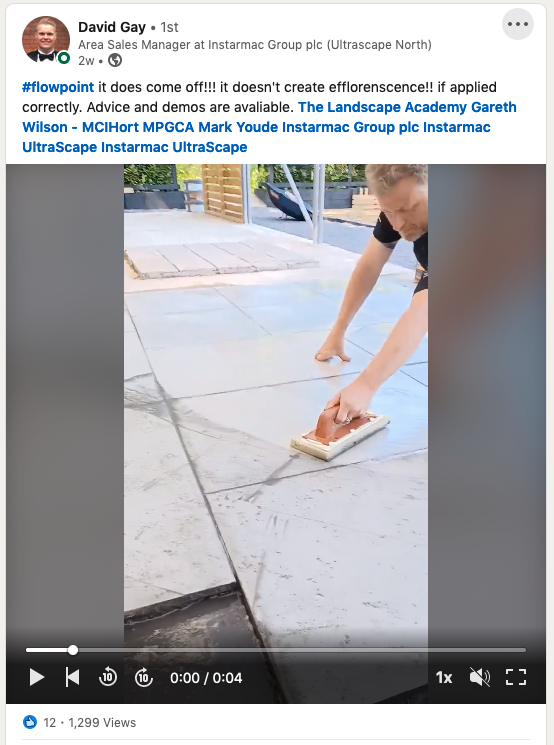
Does Flowpoint cause reflective stains?
Absolutely not. When used correctly, Flowpoint does not cause reflective stains or any other types of paving stains.
Flowpoint was initially designed for large-scale commercial paving projects. It wouldn’t be the popular slurry grout it is today if it caused reflective staining.
Flowpoint is a wet slurry grout that requires damp paving surfaces and joints during application. Always mist the area before applying the flowable grout and keep the area slightly damp while moving the compound into the joints (use a rubber squeegee held at 45 degrees).
You must take care not to saturate the area with water as you risk diluting and compromising the grout itself (which is where, like with all wet slurry grouts, the risk of efflorescence arises).
The whole area needs a thorough clean afterwards. Ensure the joints have dried enough first. Place your thumb lightly in one of the joints – if it leaves a thumbprint, it is too soon to clean.
For the cleaning, you can use a Berta sponge machine (available to buy or for hire). A washboy or spray-nozzle hose will also do the job.
As with any outdoor grouting project, keep an eye on the weather. A light shower is fine to dampen the pavers and joints, but anything more than that will saturate the area far more than needed.
Find out more on how to apply Flowpoint in our frequently asked questions.
Efflorescence: prevention is better than cure
Priming your pavers first with a product like Pro-prime is almost a no-brainer to avoid this costly and time-wasting prospect – but always make sure your bedding mortar is in full contact with the slabs before you lay them.
If efflorescence is already a problem, some paviours may decide to rip the pavers up and start again.
But before taking this drastic decision, there are a few products on the market that may help to remove reflective staining:
- For acid sensitive stone: Lithofin MN Power Clean
- For acid-resistant stone: Lithofin MN Builders Clean
- For porcelain tiles: KF Cement Residue Remover
- For polymer residues: KF Intensive Cleaner
Always do a small patch test first before applying to the rest of the pavers.
Call us for tailored advice
Our team of paving experts are here to help you make the best choices for a long-lasting paving project. If you want to find out more about preventing staining and efflorescence, together with tailored advice on choosing products, just give us a call on 0330 122 1025 (Mon–Fri, 8.30am–5.30pm).

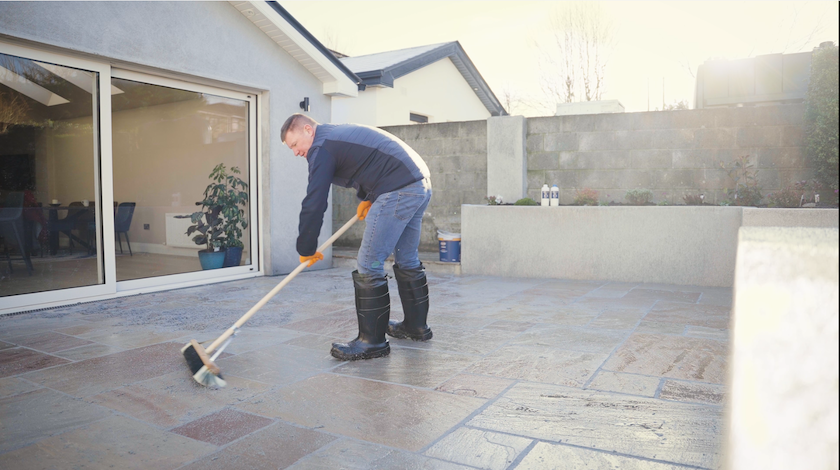
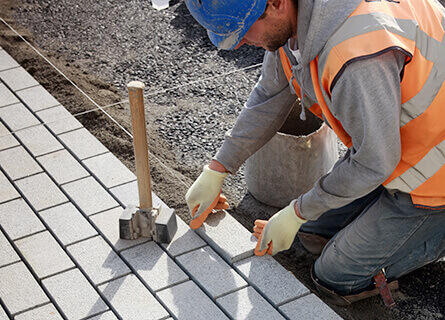
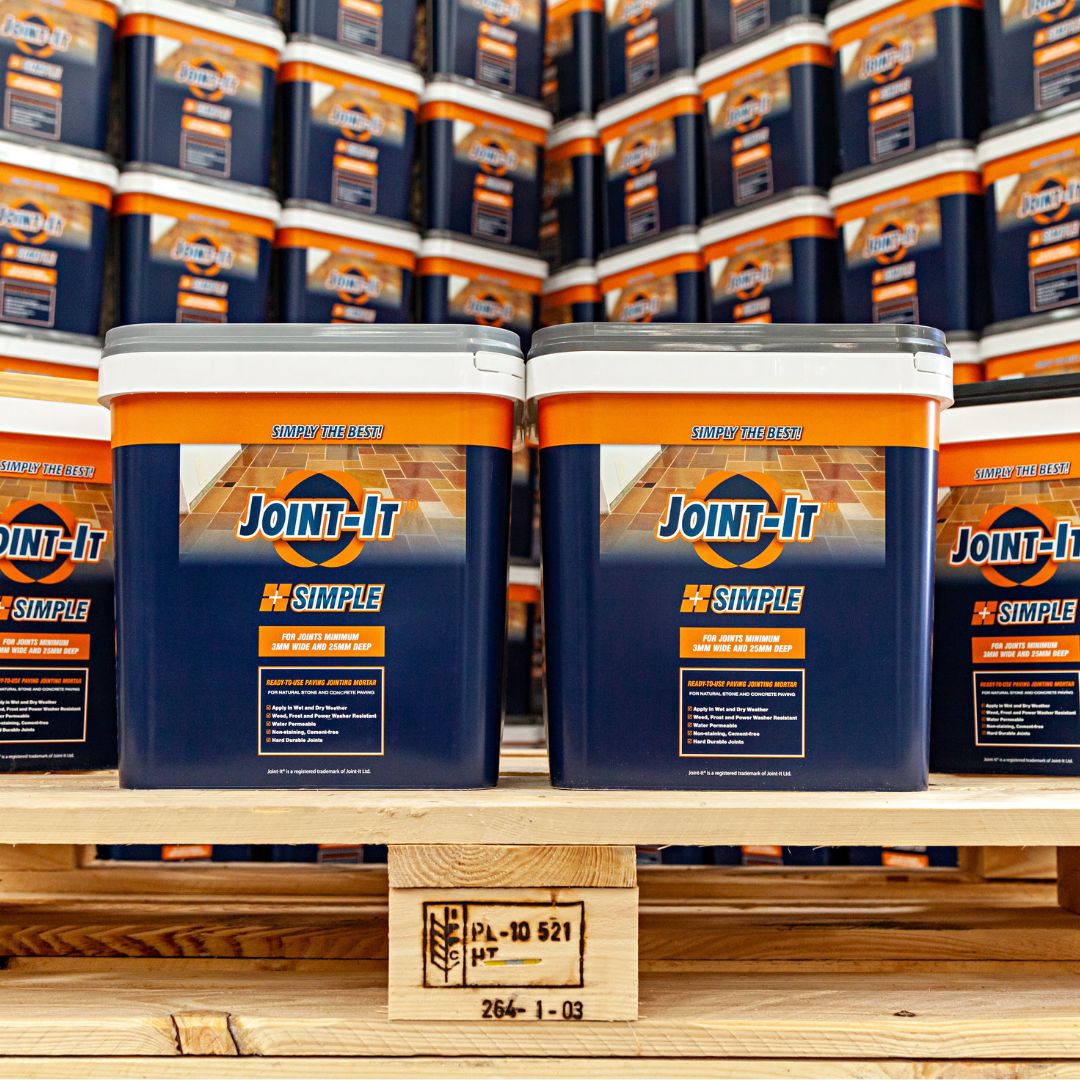
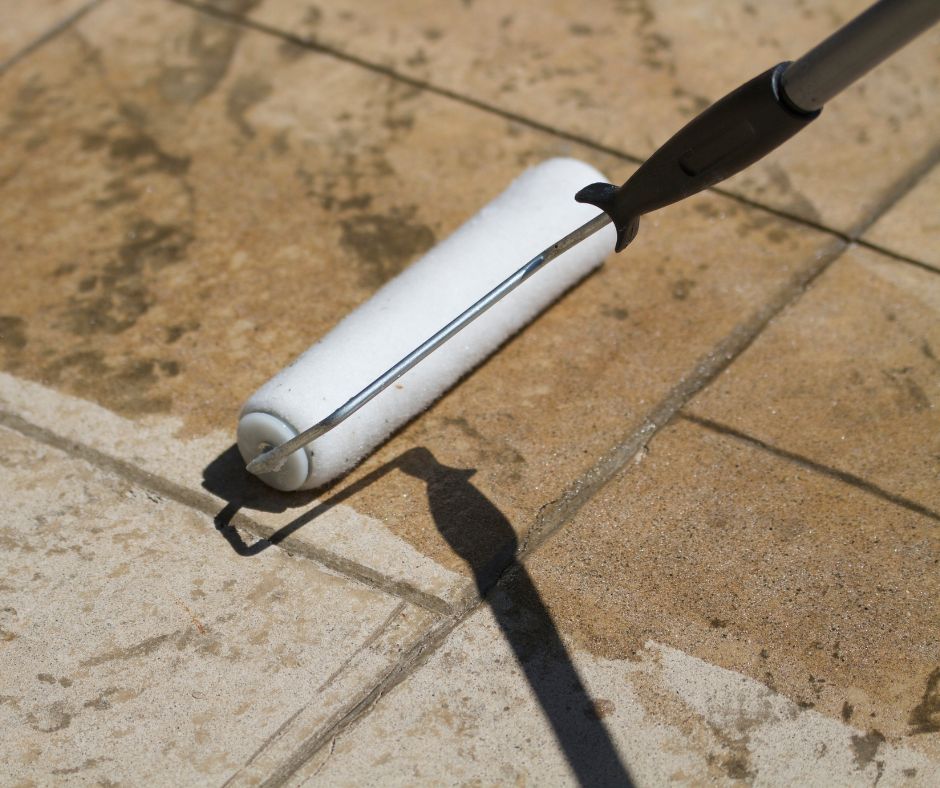
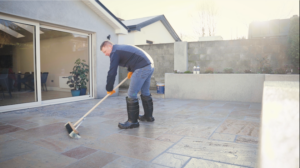
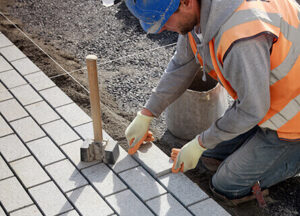
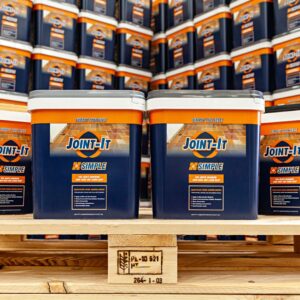

1 thought on “How to prevent staining and efflorescence on paving”
Hi, I have beautiful 9” deep cobbles however the person grouting the job made a terrible job of grouting and the result is disastrous, I am not exaggerating. So very disappointed. Is there any product/ method or tools that you would recommend to remove hardened thick grout.
Cobbles drowned in grout. Guy hadn’t followed instructions. I would appreciate any advice .
Thank you